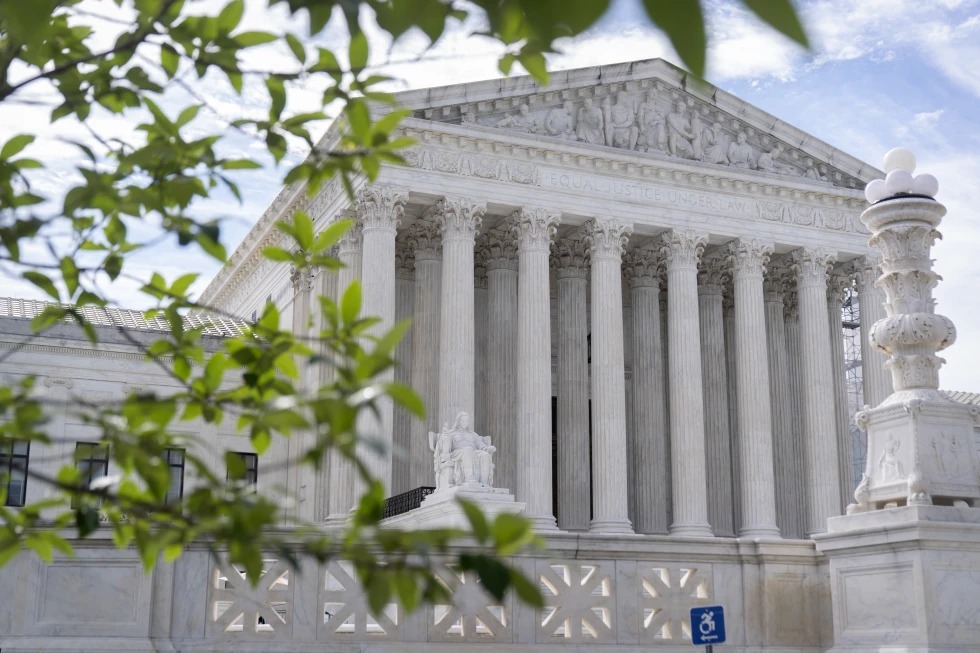
The Supreme Court is putting the Environmental Protection Agency’s air pollution-fighting “good neighbor” plan on hold while legal challenges continue, the conservative-led court’s latest blow to federal regulations.
The Justices in a 5-4 vote on Thursday rejected arguments by the Joe Biden administration and Democratic-controlled states that the plan was cutting air pollution and saving lives in 11 states where it was being enforced and that the high court’s intervention was unwarranted.
The rule is intended to restrict smokestack emissions from power plants and other industrial sources that burden downwind areas with smog-causing pollution. It will remain on hold while the federal appeals court in Washington considers a challenge to the plan from industry and Republican-led states.
The Supreme Court, with a 6-3 conservative majority, has increasingly reined in the powers of federal agencies, including the EPA, in recent years. The Justices have restricted the EPA’s authority to fight air and water pollution — including a landmark 2022 ruling that limited the EPA’s authority to regulate carbon dioxide emissions from power plants that contribute to global warming. The court also shot down a vaccine mandate and blocked President Biden’s student loan forgiveness program.
The court is currently weighing whether to overturn its 40-year-old Chevron decision, which has been the basis for upholding a wide range of regulations on public health, workplace safety and consumer protections.
Three energy-producing states — Ohio, Indiana and West Virginia — have challenged the air pollution rule, along with the steel industry and other groups, calling it costly and ineffective. They had asked the high court to put it on hold while their challenge makes it way through the courts.
The issue came to the court on an emergency basis, which almost always results in an order from the court without arguments before the Justices.
But not this time. The court heard arguments in late February, when a majority of the court seemed skeptical of arguments from the administration and New York, representing Democratic states, that the “good neighbor” rule was important to protect downwind states that receive unwanted air pollution from other states.
The EPA has said power plant emissions dropped by 18% last year in the 10 states where it has been allowed to enforce its rule, which was finalized a year ago. Those states are Illinois, Indiana, Maryland, Michigan, New Jersey, New York, Ohio, Pennsylvania, Virginia and Wisconsin. In California, limits on emissions from industrial sources other than power plants are supposed to take effect in 2026.
The rule is on hold in another dozen states because of separate legal challenges. Those states are Alabama, Arkansas, Kentucky, Louisiana, Minnesota, Mississippi, Missouri, Nevada, Oklahoma, Texas, Utah and West Virginia.
States that contribute to ground-level ozone, or smog, are required to submit plans ensuring that coal-fired power plants and other industrial sites don’t add significantly to air pollution in other states. In cases in which a state has not submitted a “good neighbor” plan — or in which the EPA disapproves a state plan — the federal plan was supposed to ensure that downwind states are protected.
Ground-level ozone, which forms when industrial pollutants chemically react in the presence of sunlight, can cause respiratory problems, including asthma and chronic bronchitis. People with compromised immune systems, the elderly and children playing outdoors are particularly vulnerable.
___
Republished with permission of The Associated Press.




2 comments
Michael K
June 27, 2024 at 11:20 am
Not so long ago, buildings in cities like St. Louis were black from smoke and smog. The Cuyahoga River in Cincinnati caught fire fifty years ago because of pollution. And smog in Los Angeles was so bad that people there rarely saw the mountains and suffered serious respiratory ailments.
We made so much progress. But now we seem to be moving backward to a place where environmental degradation and destruction are a badge of honor. Clean air and clean water should be a national concern, and a reasonable expectation for everyone. The rest of the nation should not have to suffer the consequences of irresponsible stewardship and greed of a few, especially those in poor rural areas which seem to bear the brunt of toxic pollutants.
Just Me
June 27, 2024 at 1:05 pm
I have made $200 reliably in one day.That was my ideal day in my life and my boss was to a great degree content with me..CNN is additionally awed from my work and is outstandingly happy..check also unpretentious parts by open the affiliation and tap on HOME TECH OR MEDIA………
Begin here>>>>>>>>> Payathome9.Com
Comments are closed.